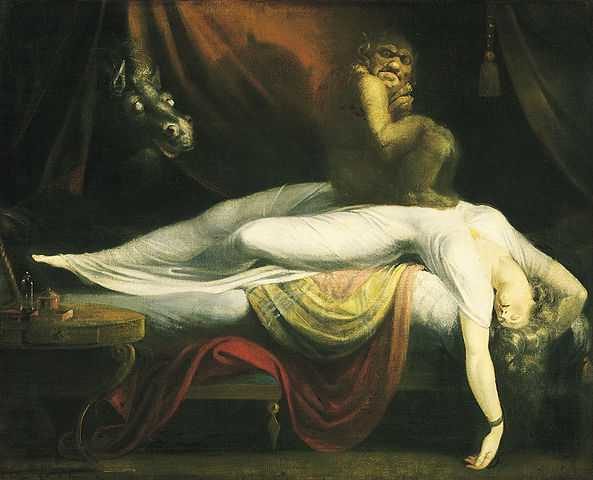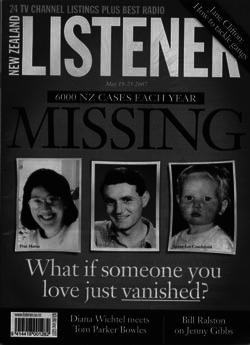When the Sunday Star-Times decided to survey the nation on how superstitious New Zealanders are and about what, Vicki Hyde got used as a guinea pig. Part One of her responses was published in the last issue of the NZ Skeptic. This is Part Two.
The Paranormal
Paranormal phenomena are things that cannot be explained and/or proven by current scientific methods. Put a number between 1 and 7 next to each item to indicate how much you agree or disagree with that item.
7 = Strongly agree, 1 = Strongly disagree, 4 = Neutral
Astrology is a way to accurately predict the future.
1 – Having done lots of charts, I know it’s applied psychology – people will read into it what they want to. No accuracy, no prediction.
Psychokinesis, the movement of objects through psychic powers, does exist.
7 or 1 – If you’d said mental abilities instead of psychic powers, I would have agreed. We have a growing number of examples of neurological manipulation of an external environment, such as people able to move cursors around a computer screen by thinking at it. That’s real with the right kind of technology behind it. And pretty darned amazing, not to mention hugely inspiring for people with motor disabilities, given the possibilities for future development.
However, using psychic powers, a la X-Men, to shift things, that’s not been demonstrated.
During altered states, such as sleep or trances, the spirit can leave the body.
1 – Presupposes the existence of the spirit in the first place …
Out-of-body experiences (OOBEs) are fascinating and real in the sense that the people who experience them – me, for one! – feel as if they are real. However, neuroscience is starting to paint a very interesting picture of how these experiences occur and even how to induce them. This does not involve the spirit departing the body, nor have such experiences been able to demonstrate conclusive proof of knowledge gained solely from such a spirit wandering.
The Loch Ness monster of Scotland exists.
1 – Though it would be great if it did. Imagine a plesiosaur living in these times; that would be a magnificent survival story. But you only have to stop and think for a bit to see how unlikely it is. We’ve got much more chance for the Fiordland moose or the moa to pop up here than Scotland’s favourite cryptozoological beastie lurking in the depths.
The number ’13’ is particularly unlucky or particularly lucky
1 – Only if you’re culturally responsive to it. Other cultures don’t like four or seven or NEE!
Reincarnation does occur.
1 – I haven’t seen any good evidence for agreeing with this, and it presupposes a whole host of entities and processes to support it for which there is no evidence.
There is life on other planets.
7 – I’d prefer if it you said “likely to be life on other planets”, as we still don’t have any specific examples, but I’ll take a punt and be definite on this one. It’s a big universe out there and it would be rather presumptuous of us to assume that our planet was the only one to experience the right conditions for life to occur.
Most card-carrying skeptics would agree with this one. Where we tend to demur is the idea that that life must therefore be intelligent and buzzing our planet teasing the natives …
Some psychics can accurately predict the future.
1 – Only if you define accurately to mean “roughly right if you let them reinterpret what they said after the event”. Anything other than their very generalised predictions have failed on a regular basis. Here’s some examples:
For 2001, psychics predicted that:
- the nine US Supreme Court judges would vanish without a trace
- the Mississippi River would flood, forming a new ocean in the US heartland
- Pope John Paul II would die and his successor would be Italian
And the big story they missed – the 9/11 attack on the Twin Towers in New York.
In 2005, professional psychics saw the usual mix of the banal and bizarre, including that:
- terrorists would start World War III by shooting a nuclear missile into China
- the winner of a new reality TV show would gain fame by killing and eating a contestant
- the San Andreas Fault in California would have a massive rupture on June 17 with a death toll reaching 4,568,304
What did they miss – Hurricane Katrina, which made thousands homeless in the southern US, and the devastating earthquake that hit Pakistan and India in October, killing 73,000 people.
There are actual cases of witchcraft.
5 – It depends on your definition of witchcraft, which is a culturally and historically complex concept. Riding on broomsticks, outside the Harry Potter movies, is right out, though there might be a technological fix for that in the future, which could be fun.
In a strong cultural context, makutu, maleficus, pointing the bone, voodoo and a whole pile of other psychological techniques can certainly affect a compliant individual immersed in the belief system.
It is possible to communicate with the dead.
1 – Certainly not going by the current crop of rather banal, self- similar pronouncements by those professionals claiming to have this ability.
Taniwha do exist.
4 – Culturally yes, physically no. And this makes it different to the Loch Ness Monster or the Yeti, where people claim such things can be found and photographed.
During the 2002 furore over the Waikato taniwha lurking inconveniently in the path of the main south highway no-one went and actually looked for Karu Tahi. It was understood that the taniwha was a cultural matter, not a physical matter, and that regardless of that, it had a role to play in the debate about development.
Have you ever had a ‘paranormal’ experience – one that can’t be explained scientifically, or ‘proven’ in ways that a scientist would accept? If so, what was it?
Not one that I haven’t been able to think of an alternative non-paranormal explanation for.
You’ve got to remember that, based on general experiences and basic maths, you should experience a million-to-one coincidence roughly every two years – so the world will throw up mysterious experiences from time to time. How we explain those experiences by observation, examination, replication and just plain hard thinking is a lot of fun, and far more interesting than the quick jump to a paranormal pablum.
Lotto
How frequently do you buy a Lotto ticket?
Not in about 10 years.
If you buy one often, do you regularly use the same numbers? (Y/N)
Nope, but I do know what numbers to use to increase my winnings. Send me $10 and I’ll tell you how … 🙂
But seriously, you can improve your winnings by doing the following:
- select sequences -most people think these can’t come up as they aren’t random, but they are as random as another other set of numbers (don’t choose 1, 2, 3, 4… or …37,38,39,40 as these are more likely to be chosen for sequences).
- don’t choose any numbers with 7 in them; seven is commonly considered a lucky number, so when the numbers 7,10,17,23,27,33,37 came up in one draw, 21 people shared the first division prize and 80 people took the second division. The average number of winners at that time were 3 and 19 respectively, so any winner of that draw had a much smaller part of the pie.
- don’t choose double digits or numbers ending in 0 – these are more likely to be picked by people playing numbers.
These strategies do not affect your chances of winning, but can be used to improve the amount you win. This is because you are not playing merely against the machine, but also against everyone who has a Lotto ticket. Pick the more ‘popular’ numbers and you’ll have to share the prize with more people. Select ‘uncommon’ numbers or ‘unlikely’ sequences and you have a good chance of not having to share the winnings.
Who said maths wasn’t useful …
Religion
Do you consider yourself to be a religious/spiritual person? (Y/N)
No. Ethical, yes; moral, yes; honourable yes, but I don’t think you have to be religious or spiritual for any of that.
If so, what religion/teachings do you follow?
I guess the closest I’d get to one would be the Golden Rule, found in many a religion and philosophy – variously described as “do as you would be done by”. Sure there are critiques of this ethic of reciprocity, but it’s not a bad one-liner to start with.
Conspiracy Theories
Below is a list of theories about the causes of important or controversial events. Please read through, and indicate how likely these are as actual explanations.
7 = very likely, 1 = extremely unlikely
The All Blacks were deliberately poisoned before the 1995 rugby world cup final
5 – Put enough people together in a group environment under stress and it’s not unlikely some will fall ill. ‘Course the circumstances can seem more suspicious depending on the situation, and I’d tip this one on the more likely side just because of the circumstances surrounding it. On the other hand, sh*t happens …
Princess Diana was killed by British secret service in order to prevent a Royal scandal
1 – I just don’t think they’re that competent …
A secret cabal of American and European elite control the election of national leaders, the world economy, and direct the course of history in their favour
1 – At some times, in some places, there have been powerful non-elected forces at work behind the scenes, but an all-powerful Illuminati seems very unlikely.
There is a deliberate political conspiracy to suppress the rights of minorities in NZ
3 – Not a conspiracy, but possibly just basic human psychology at work. Never put down to malice what can be achieved through thoughtlessness …
Of course, you could argue that democracy and consensus-building, by their very nature, are going to ride over minorities in their general quest for the greatest good for the greatest number. But I’d need a lot more red wine in me to get into that debate …
NASA faked the first moon landings for publicity
1 – Only the first?
I think the saddest thing about this one is that my kids, and a whole lot of other people, are growing up in a world where they’ve never seen a moon shot to inspire them with a sense of awe at what humanity is capable of achieving. When everyone in my fourth form class had a poster of the Bay City Rollers stuck to their desk-lid, I had the famous shot of Buzz Aldrin standing on the Moon. It still makes my heart lift.
The war in Iraq has less to do with promoting democracy than it does with controlling oil production in the East
6 – The reasons for going into Iraq were pretty shonky in the first place. But few things are done for just one reason …
Elvis Presley faked his death to escape the pressures of fame, the shame of his decline, or the unwanted attentions of the Mob
1 – Nope, he just carked it. Now if you’d cited Jim Morrison I might’ve wondered as I think he’d have been smart enough to pull it off …
World governments are hiding evidence that the earth has been visited by aliens
1 – Too big a story, too incompetent a collection to let that one run for any length of time.
The American government was either involved in, or knew about, the September 11 attacks before they happened
2 – I gather they were aware that an attack of some kind was being planned, but the rest of the conspiracy ideas around this are just sickening and demonstrably incorrect in many cases. People want to find an explanation for such things and someone to blame and, for some, governments or Big Business or the MIB or the Gnomes of Zurich serve as the first port of blame.




